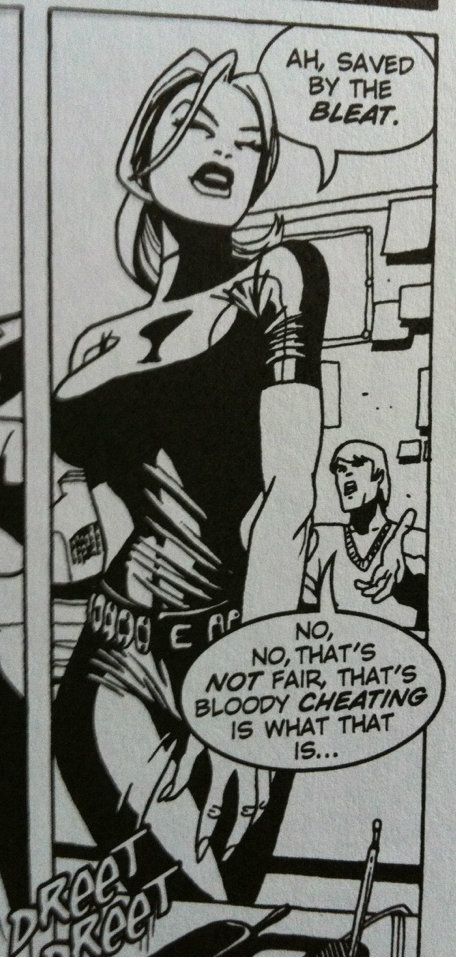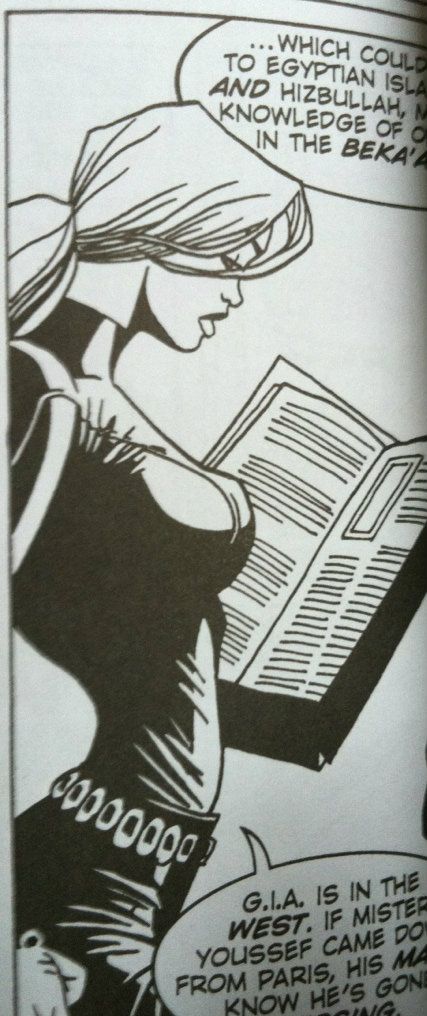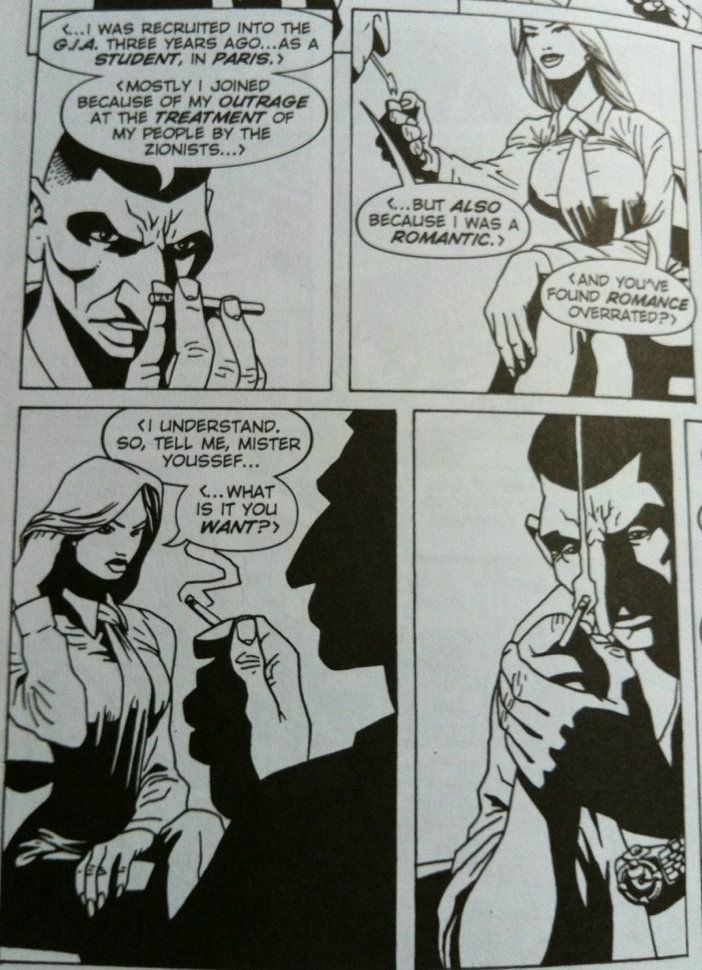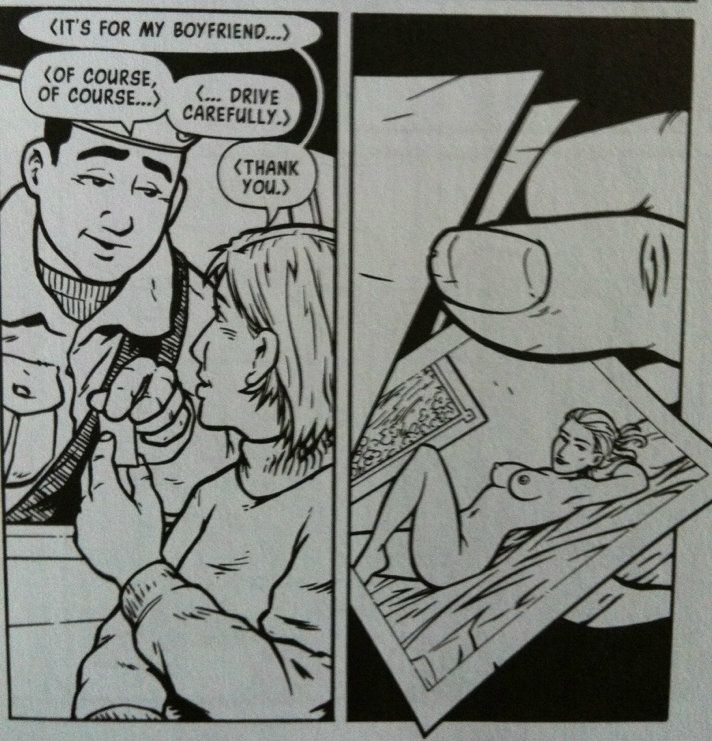So I think sexism is pretty crappy. The vast majority of my objections to it center on the fact that women are people and treating them as anything less than that is pretty fucking awful. That said, I think sexism and sexist portrayals of women suck for guys too for a whole variety of (less important) reasons.
Specifically, I want to highlight how sexist drawings in comics represents poor visual storytelling.
I'm going to use Queen an Country to illustrate my point since the series has a single writer and many vastly different artists. Each artist draws a discrete story arch and brings their own style, sensibilities, and take on the characters of Q&C from the muddled noir of Jason Shawn Alexander to the clean, cartooning of Chris Samnee. It's pretty much a perfect vehicle to analyze how different portrayals of characters affect storytelling.
I want to focus on the portrayal of Tara Chace, the female Minder (spy) who is the protagonist of the series. She is described as a fiercely intelligent and supremely talented spy. She is fluent in five languages (with a native accent in three) and is an expert in spycraft, hand-to-hand combat, and an accomplished marksman. Basically she is debatably the greatest living spy.
Coincidentally, Tara Chace is also described and portrayed as a conventionally attractive woman. In my favourite portrayals she is good looking, but in a toned down its-believable-she-is-a-spy kind of way. However, in virtually all portrayals of Tara Chace her sexiness is a lesser character point that takes a back seat to how much of a goddamn badass she is.
And when her sexiness is made her main characteristic, it's weird and distracting.
Oh yeah, there are going to be mild *SPOILERS* in this one.
Enter artist Leandro Fernandez who draws the Opertaion Crystal Ball story arch of Queen and Country. He has a cartoony style that borders on caricature. His characters, to be fair, all have their character traits emphasized to a silly amount: Crocker has a giant nose and is rail thin, Kittering is lantern jawed and broad, and the Islamic terrorists portrayedin the book are drawn in a way that is... borderline racist. Tara Chace, being an attractive woman is remodelled to have an impossibly thin waist and improbably large, and perky breasts. In Fernandez's story she is drawn as a caricature of a sexy woman.
Now this version of Chace, beyond being pretty sexist (she is the only sexually exaggerated character) is just weird. People don't look like that in real life. Tara Chace, based on all her other portrayals, doesn't look like that. Why has this badass, super-spy suddenly started looking a pornstar? It's a straight up bamboozling choice.
Bad taste aside, this kind of sexist caricature also leads to confusing visual storytelling.
Check out the image below. It's taken from a scene where Tara Chace is interviewing a man with information concerning a terrorist plot who wants to be paid for what he knows. It seems to me that it's meant to be a tense and business like scene meant to ratchet up the stakes and get the machinery of the plot set up in a logical/believable way for latter pay offs.
Doesn't it seem vaguely and inexplicably sexually charged though? Doesn't it just distract from the plot business that's going on?
That's the problem with these exaggerated sexual portrayals of women: when they are portrayed as sex objects part of our brains process the ridiculously sexualised nature of the character and consciously or subconciously decide whats going on is in some way sexual. Even if what's going on, like in this scene, isn't in any way sexual. And when things are sexy for no reason it distracts from the actual narrative goals of a given scene which makes these types of portrayals bad visual storytelling.
Now this isn't to say I'm catagorically against portraying characters in sexy ways or having sexualised characters. Some characters are meant to be sexy-sexy (Penny Century in Love and Rockets for instance, or Emma Frost of the X-Men), but Tara Chace is supposed to be a fucking stonecold badass spy. Her character design should never be sexy-sex as a priority.
Of course, there are certainly times when Tara Chace should be portrayed in a sexy way to further narrative goals, and there are a bunch of great examples throughout Queen and Country.
In this scene from the first Queen and Country story arch drawn by Steve Rolston, Chace uses a naked photo of herself to distract a guard at a checkpoint so he doesn't notice she is sitting in a car with a bleeding bullet wound in her leg. While maybe a bit heavy handed, this scene plays into the ongoing thematic discussion of Tara Chace as a female spy and the specific advantages and challenges her sex conveys on her job. It also shows that her attractiveness is another weapon in Chace's arsenal as an agent. It's also worth noting that this bit of sexy-sex comes after a whole story about Chace doing intelligent, skillful, and hardcore things, making this bit of T&A in addition to Chace's established credibility.
This bit from Operation Stormfront is by Carla Speed McNeil, who is probably my favourite Q&C artist. Again, it's a salatious scene done well and in service to the story. In the scene this these panels are taken from when Chace finds herself on a mission and sharing a hotel room with a brand new Minder 3 (for operational and budgetary reasons). The awkward sexual imagery of this scene emphasizes the weird forced intimacy between the two agents: being forced to live together, rely on each, and trust each other with their lives. And the sexual imagery tied to this just emphasizes this. It's also great because Chace had had a sexual affair with the previous Minder 3, whose death she is still dealing with. The weird intimacy of this scene, therefore, also serves to emphasize the difference between the new and old Minder 3 and the difference in how Chace relates to them. It's a really effective scene, and a really smart use of risque imagery to further narrative objectives.
(I also love how Chace's portrayal here is as a realistically attractive woman and not a charicature.)
This scene also ends with one of my favourite moments in all of Queen and Country and, conveniently, a perfect summation of how I feel about sexist portrayals of women in comics:






No comments:
Post a Comment